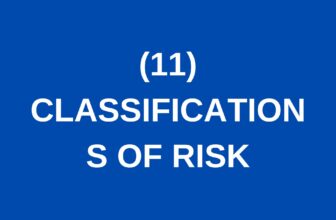7. Understanding Risk Management: An Introduction (FREE COURSE)
Introduction
Welcome to Chapter Six of our Risk Management course. Today, we will delve into the vital topic of risk management, a field that has gained significant traction across various industries. As the name suggests, a risk manager’s primary responsibility is to control and reduce risks. However, the role encompasses much more than just mitigating risks. In this blog post, we will explore what risk management entails, the role of a risk manager, and the fundamental concepts you need to know as an entry-level insurance professional.
The Role of a Risk Manager
A risk manager’s job is not confined to the insurance industry. Risk managers are prevalent in many sectors, including manufacturing, petroleum, and more. Their primary duty is to identify, analyze, and control risks, ensuring that the organization is prepared for potential challenges. The presence of risk managers across various industries highlights the importance of their role in today’s market.
What is Risk Management?
Risk management is a systematic approach involving various steps and methodologies to identify, analyze, and control risks. It encompasses a range of procedures and actions designed to manage potential threats to an organization. While we have a dedicated chapter for detailed discussions on risk control, this course aims to introduce the basic concepts of risk management essential for an entry-level insurance professional.
Key Concepts in Risk Management
Defining Control
Control, in the context of risk management, refers to the power to influence or direct behaviors and the course of events. It is crucial to understand this term as it forms the foundation of effective risk management practices. In future chapters, we will explore control mechanisms in greater detail.
Technical Definition of Risk Management
The technical definition of risk management is the process of identifying, analyzing, and controlling the risks surrounding an entity. This definition underscores the three primary functions of risk management:
- Risk Identification: Recognizing potential risks that could affect the organization.
- Risk Analysis: Assessing the identified risks to understand their potential impact.
- Risk Control: Implementing measures to manage and mitigate these risks.
Benefits of Risk Management
Understanding the benefits of risk management is crucial for appreciating its importance. Some key benefits include:
- Reducing Potential Losses: By identifying and managing risks, organizations can minimize potential financial and operational losses.
- Less Unwanted Surprises: Effective risk management helps prevent unforeseen events that could disrupt operations.
- Revealing Hidden Risks: It helps uncover risks that might not be immediately apparent.
- Measuring and Evaluating Risks: Organizations can better understand the severity and likelihood of risks, allowing for more informed decision-making.
Conclusion
We have reached the end of this class. Risk management is a multifaceted field that plays a critical role in safeguarding organizations across various industries. As an entry-level insurance professional, the knowledge you gain from this course will provide a solid foundation in risk management principles. Should you have any questions or need further guidance on becoming a risk manager, please feel free to contact me. I’m here to help.
Thank you for your attention, and I look forward to our next session.
For more detailed discussions and future updates, stay tuned to our course materials. If you have any questions or need additional support, do not hesitate to reach out.





